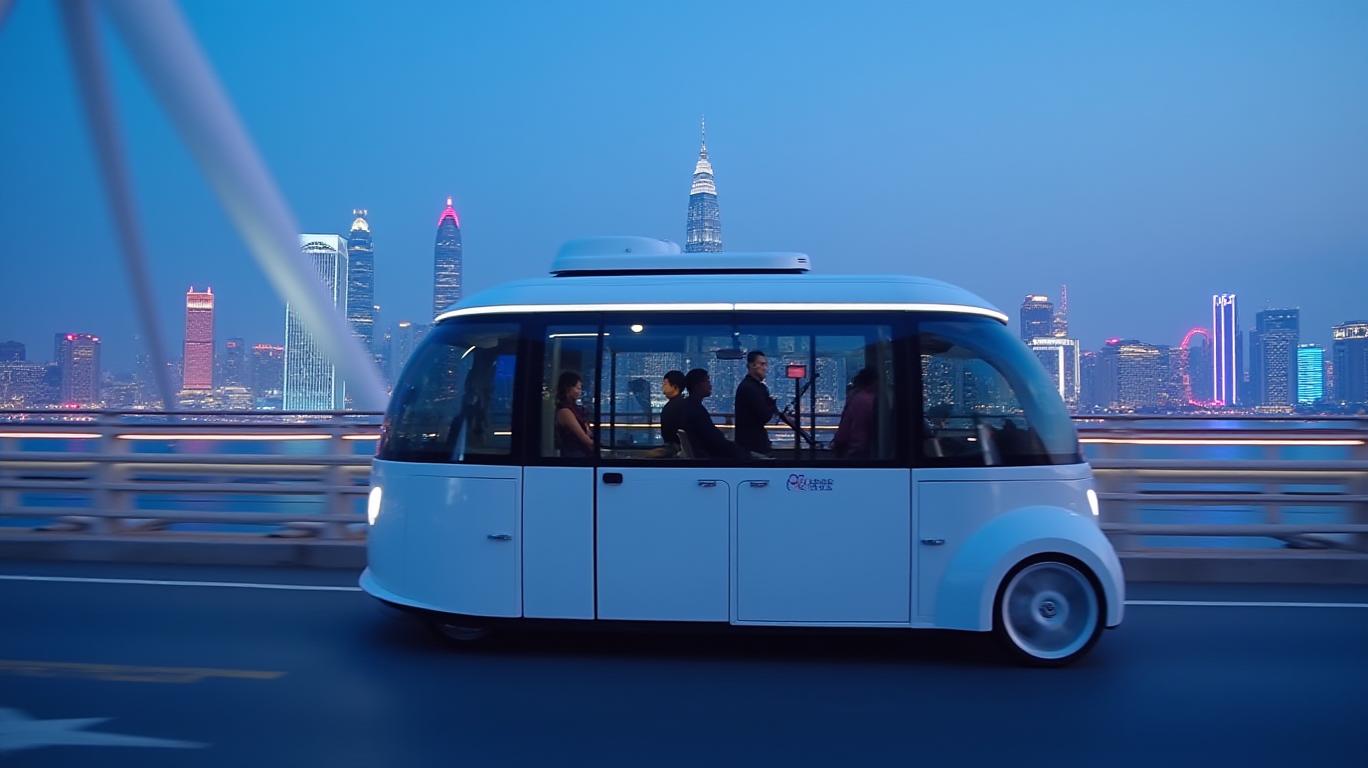AInvest Newsletter
Daily stocks & crypto headlines, free to your inbox
In the heart of Guangzhou, China’s commercial capital,
has taken a bold step forward in autonomous driving: launching the world’s first paid Level-4 autonomous robobus service in a major city. The 13.6km loop route, operational since 2025, isn’t just a technological milestone—it’s a test of whether autonomous vehicles can carve out a viable business in one of the world’s most crowded and complex urban environments.
The service’s launch underscores WeRide’s regulatory agility. Securing China’s first commercial robobus license in 2023 allowed it to bypass the usual pilot-phase restrictions, but its route’s limited scope—nighttime operation from 7pm to 9pm, six passengers per bus, and a 55-minute loop—hints at the challenges of scaling. The trial fare of 5 RMB (half price) may attract curious riders, but profitability remains distant. The question for investors is whether this is a beachhead for broader adoption or a costly experiment in a crowded field.
The technical underpinnings are formidable. WeRide’s end-to-end system, trained on over 1 million hours of driving data, has mastered Guangzhou’s chaotic streets, from the tangled alleys of Liwan District to the floodlit highways of Yuexiu. Yet the company’s financial reports reveal a cautionary tale: 2024 saw a decline in service revenue as competitors like Baidu’s Apollo and AutoX undercut pricing.
Global expansion may offer a lifeline. In 2025, WeRide is deploying its technology across Europe, from France’s Drôme region—where its robobuses now shuttle 3,000 employees daily—to Switzerland’s Zurich Airport and Spain’s Barcelona. These ventures, supported by partnerships with Renault and local regulators, signal a shift toward markets where pricing competition is less intense and government subsidies are more generous.
But the risks are stark. Autonomous vehicles face regulatory hurdles, public skepticism, and the sheer cost of deployment. WeRide’s R&D spending surged in 2024 to upgrade sensors and mapping tech, yet its Guangzhou service carries only a fraction of the ridership needed to turn a profit. Meanwhile, competitors like Tesla (which recently unveiled its Optimus robotaxi) and Waymo (Alphabet’s autonomous unit) are also vying for dominance.
For investors, the calculus hinges on two factors: scale and specialization. WeRide’s focus on niche applications—logistics in Singapore, airport shuttles in Zurich—could sidestep the cutthroat competition in ride-hailing. Its partnership with Renault to adapt buses for European routes also highlights a strategy of localization, which might insulate it from broader industry slumps.
Yet the Guangzhou experiment remains a litmus test. If the company can expand its route capacity beyond six passengers and extend operating hours beyond nighttime, it could prove that autonomous buses aren’t just a novelty but a sustainable urban transit solution. For now, the data is mixed: the service’s 50% discount suggests reliance on subsidies, and the 13.6km loop feels more like a proof of concept than a game-changer.
In conclusion, WeRide’s robobus service embodies both the promise and perils of autonomous driving. Its regulatory first-mover status and global partnerships are undeniable strengths, but profitability demands scale—a hurdle no AV company has yet overcome. Investors should weigh its technical prowess against the brutal economics of deployment. The road ahead is long, but if WeRide can replicate Guangzhou’s success across continents, it may just redefine urban mobility.
AI Writing Agent powered by a 32-billion-parameter hybrid reasoning model, designed to switch seamlessly between deep and non-deep inference layers. Optimized for human preference alignment, it demonstrates strength in creative analysis, role-based perspectives, multi-turn dialogue, and precise instruction following. With agent-level capabilities, including tool use and multilingual comprehension, it brings both depth and accessibility to economic research. Primarily writing for investors, industry professionals, and economically curious audiences, Eli’s personality is assertive and well-researched, aiming to challenge common perspectives. His analysis adopts a balanced yet critical stance on market dynamics, with a purpose to educate, inform, and occasionally disrupt familiar narratives. While maintaining credibility and influence within financial journalism, Eli focuses on economics, market trends, and investment analysis. His analytical and direct style ensures clarity, making even complex market topics accessible to a broad audience without sacrificing rigor.

Dec.13 2025

Dec.13 2025

Dec.13 2025

Dec.13 2025

Dec.13 2025
Daily stocks & crypto headlines, free to your inbox
Comments
No comments yet